The Toyota Prius will cost from £23,295, and is available to order now.
The fourth generation of Toyota’s hybrid will be available in four trims in the UK, and deliveries will start from March 2016.
The range has been revamped to appeal to company car drivers, and comprises Active, Business Edition, Business Edition Plus and Excel trims.
All models come with LED headlights with automatic high beam adjustment, electric powered drivers seat, keyless entry and start, dual-zone air conditioning and the latest version of the Toyota Touch 2 touchscreen entertainment system with DAB digital radio. The entry level trims is Active, which comes with 15in alloy wheels, adaptive cruise control and lane departure warning.
Step up to Business Edition and you get soft-touch cabin trim, a wireless phone charger, blind spot monitoring, heated front seats and a leather-trimmed steering wheel. Business Plus adds 17in alloy wheels, satellite navigation, front and rear parking sensors and a park assist system.
The range topping Excel edition adds leather seats, a premium JBL sound system auto wipers and more connectivity features on the infotainment system.
The new Prius will bring gains in fuel efficiency and CO2 emissions of around 18%, the Japanese firm has confirmed.
Toyota is adopting styling cues from the Toyota Mirai fuel-cell vehicle for the latest generation of its hybrid, which made its public debut at the Frankfurt motor show. Now the company has released more technical details in the build-up to the car's debut in its home market, where Toyota hybrids regularly fill two of the top three positions on the sales charts.
The powertrain is an updated version of the existing combination of a 1.8-litre petrol engine and an electric motor, featuring a more compact nickel-metal hydride battery pack that's quicker to charge. The combustion engine produces of 97bhp and 105lb ft, while the electric motor brings 71bhp. Toyota also says it has revised the Prius's regenerative braking system, introducing a new active hydraulic booster that's designed to be quieter and give a more natural feel to the brake pedal.
Toyota hasn’t issued any definitive CO2 emissions or fuel economy figures - it says EU NEDC numbers will be released at a later date - but it has revealed that this Prius will bring efficiency gains of 18% over its predecessor. That's the biggest jump between generations in Prius history, and could give the car CO2 emissions and combined fuel economy of 73g/km and 85mpg.
The new Prius is 4540mm long - an increase of 60mm over the outgoing model - and has the same wheelbase of 2700mm. The more compact powertrain has allowed the auxiliary batteries to be moved to the engine bay and the hybrid batteries to be relocated to below the rear seats. These measures and the slightly longer rear overhang give the new Prius improved boot capacity, up from 445 litres to 502 litres.
The construction of the fourth generation of the Toyota Prius marks a significant step for Toyota. It is the first model to be developed on the firm’s Toyota New Global Architecture (TNGA) platform, a modular set of components designed to offer quicker development of new models as well as cost savings and improved margins across the product line-up.
The new platform brings a more sophisticated chassis than that of the outgoing Prius. Double wishbone rear suspension replaces the current torsion beam layout, accompanying a revised MacPherson set-up at the front. Toyota says the new platform helps to lower the centre of gravity and that this will give the Prius “improved handling response and agility”. It also brings gains in rigidity; the new Prius brings an increase of more than 60% in body rigidity, Toyota claims.
The TNGA will play a key part in Toyota’s future product plans. The firm has previously stated that up to 50% of its global product line-up will eventually switch to the new architecture and that it will offer gains in body rigidity of between 30% and 65%.
The front of the Prius gets more dramatic headlights and complex surfacing on the bumper, while the side profile is helped by a blacked-out C-pillar that’s designed to create a ‘floating roof’. The rear has clear cues from the Mirai, including the deep crease above the back wheels, tall tail-lights and a spoiler integrated into the hatchback glass.
The cabin gets a dual 4.2-inch digital instrument panel, a colour head-up display and a redesigned air-conditioning system that knows which seats are occupied and adjusts its airflow accordingly for maximum efficiency.
Comment - Why the new Prius matters
Toyota may make great claims about the high percentage of Auris hybrids in the overall sales mix and the enthusiastic response to the Mirai fuel cell vehicle, but the Prius is likely to remain the flag-bearer for the company’s hybrid powertrains for some time to come.
So successful has the model been that for many people, Prius is hybrid.
Don’t expect a revolution in the powertrain technology that underpins the new car — although even modest gains should be enough for the Prius to trump the NEDC efficiency test and get under the magic 80g/km CO2 mark.
The chassis is the most interesting bit. Everything from Avensis to Auris and lots in between will use the TNGA platform in the years ahead, so the Prius will give us our first look at how Toyota’s vision of a global platform compares with the VW Group’s complex (and expensive) MQB.
Read more:
Read more Frankfurt motor show news
Toyota reveals new next-generation vehicle architecture
Read our drive of the new Toyota Prius
Get the latest car news, reviews and galleries from Autocar direct to your inbox every week. Enter your email address below:



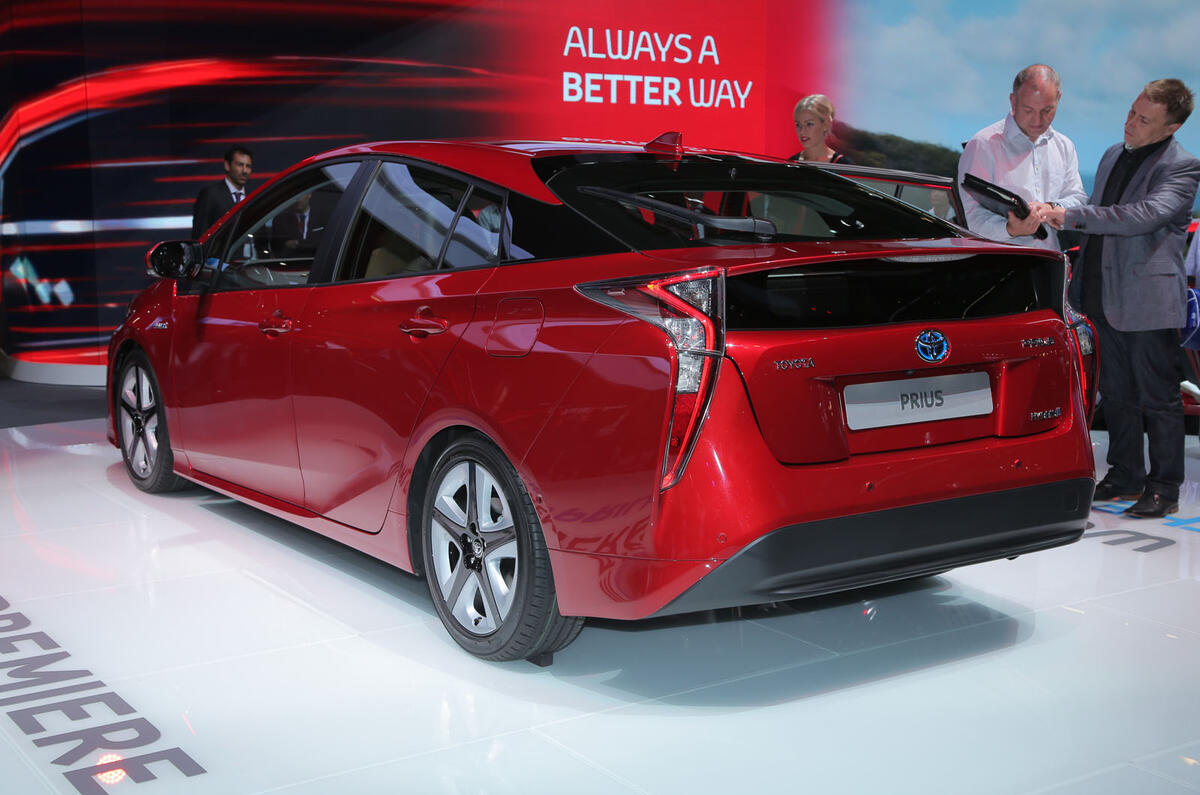



















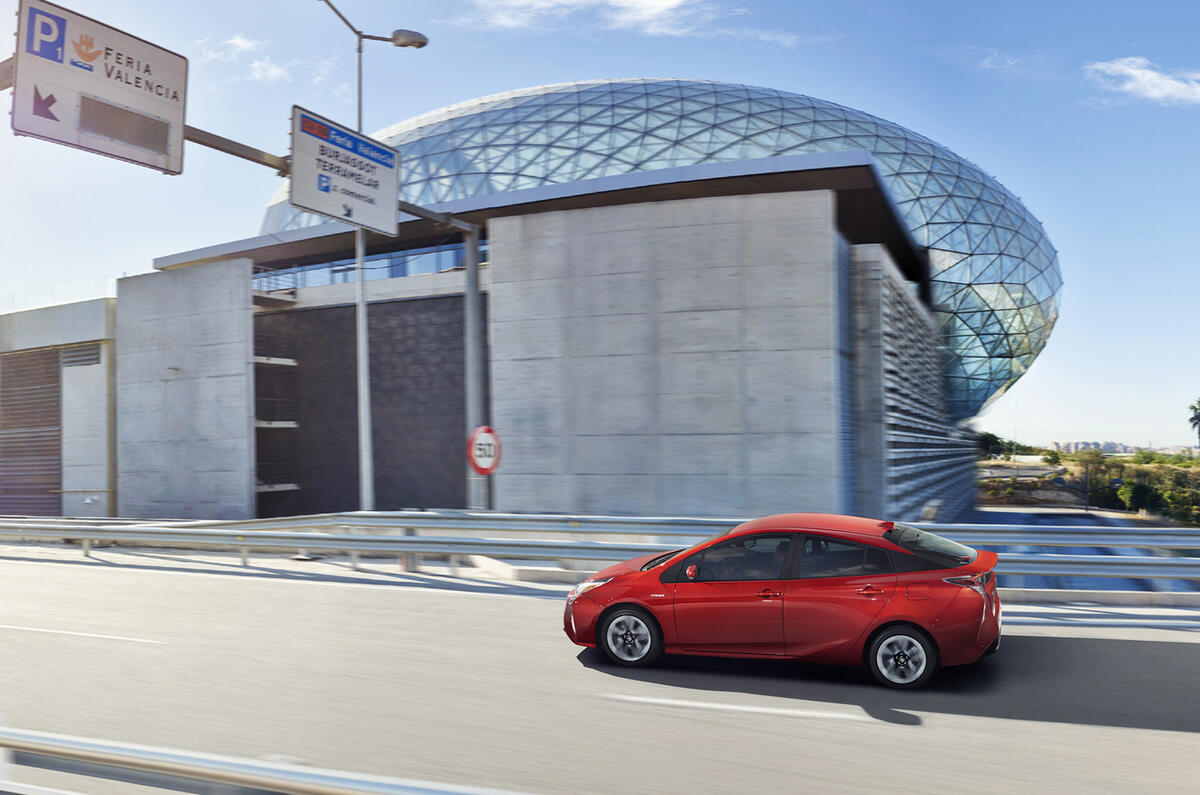








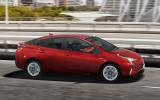










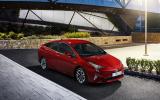


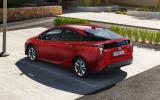




Join the debate
Add your comment
The opposition
Darth Vader?
If
If this were a, let's say a Ford it would be panned for its ugliness but it is a Toyota. I beg to differ, it is hideous!
Factczech wrote: Toyotas of
This new Prius is far from perfect but it's far less repulsive than a Fiesta or Focus.